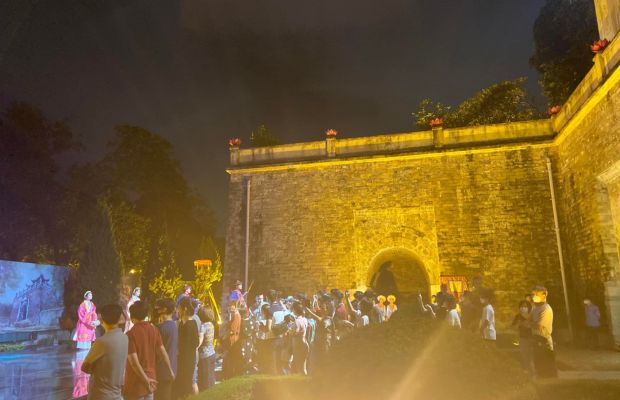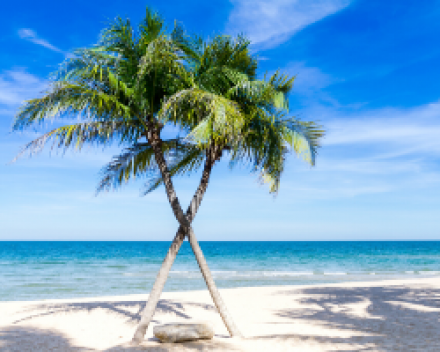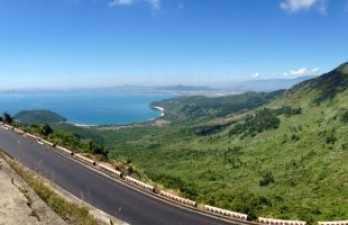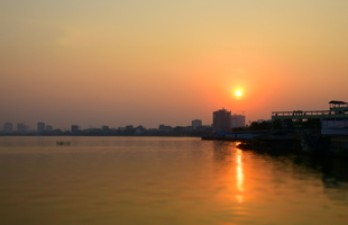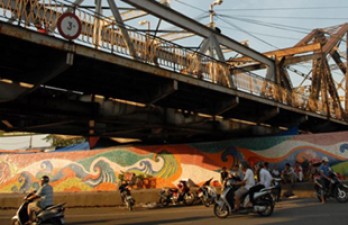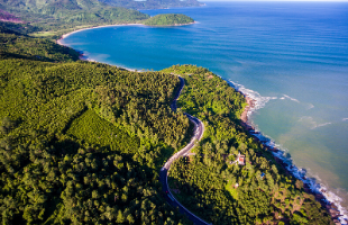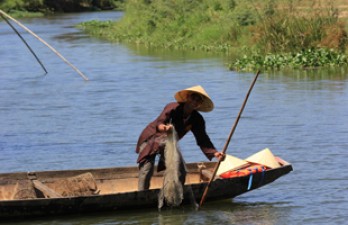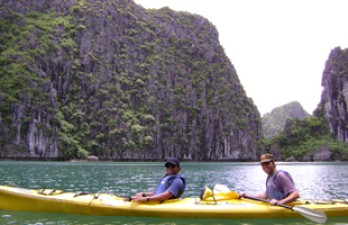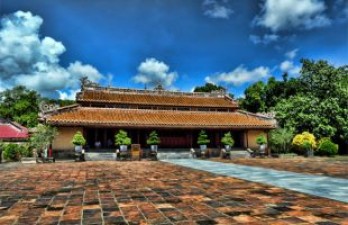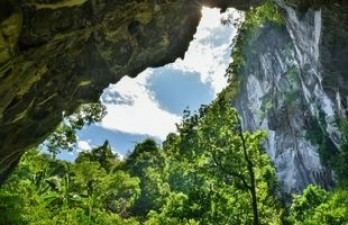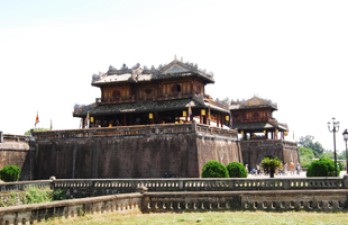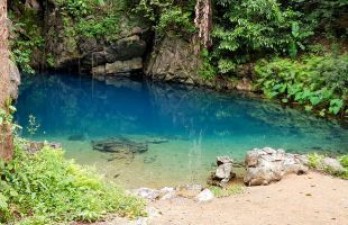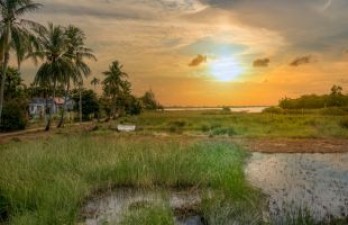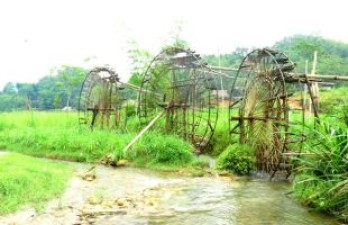Discovering the UNESCO Heritage Sites of Vietnam - Handspan Travel Indochina
2Vietnam, a charming Southeast Asian country, is home to several UNESCO World Heritage Sites. These sites demonstrate the diversity in landscapes, rich culture, and history of the country. Let’s embark on a journey to explore the UNESCO Heritage Sites of Vietnam with Handspan Travel Indochina!
This blog post will give you detailed information about these captivating sites below.
Imperial Citadel of Thang Long
- Address: 19C Hoang Dieu, Dien Bien Ward, Ba Dinh District, Hanoi, Vietnam
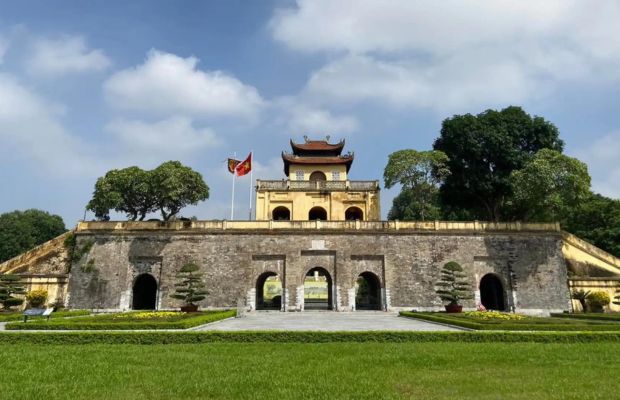
Imperial Citadel of Thang Long
The Imperial Citadel of Thang Long, located in the heart of Hanoi, is one of the UNESCO Heritage Sites of Vietnam. This massive architectural work was built in many historical periods by the Ly, Tran, and Le Dynasties of Vietnam. It has become an important monument in the system of Vietnamese heritage. On August 1, 2010, it was recognized as a World Cultural Heritage by UNESCO. The outstanding global values of this heritage site are recognized by three outstanding features. They are the long-standing history over 13 centuries, the continuity of the heritage as a center of power, and the diverse layers of relics. Undergoing many upheavals, the ancient capital of Thang Long’s remaining relics still contain great historical and cultural values.
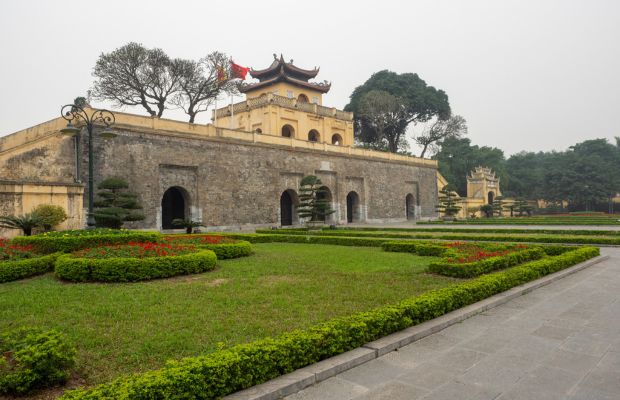
Imperial Citadel of Thang Long
Here are some amazing things to do in the Imperial Citadel of Thang Long.
- Exploring unique works in the Thang Long Imperial Citadel relic site
- Experiencing the night tour “Decoding the Imperial Citadel of Thang Long”
- Visiting the Thang Long Imperial Citadel archaeological site
- Attending exhibitions
Decoding the Imperial Citadel of Thang Long
Hoi An Ancient Town
Hoi An Ancient Town is also among the UNESCO Heritage Sites of Vietnam, recognized on December 1, 1999. Located in Quang Nam Province, Central Vietnam, Hoi An town with its peace and ancient history has become a popular tourist attraction that appeals to travelers of all tastes and across the continents. This city stands as a remarkable tangible representation of cultures throughout the time in an international commercial port. It also serves as an example of a traditional Asia trading port that is still well-preserved.
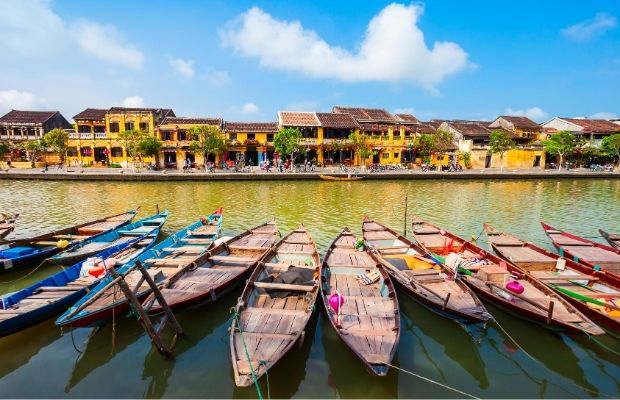
Hoi An Ancient Town
Used to be an essential trading port in Southeast Asia, Hoi An’s architecture has a blend combination of Vietnamese, Chinese, and Japanese designs, with many pagodas, temples, and ancient houses.
Traveling to Hoi An, you may want to visit these spots below.
- Pagoda Bridge (Chua Cau)
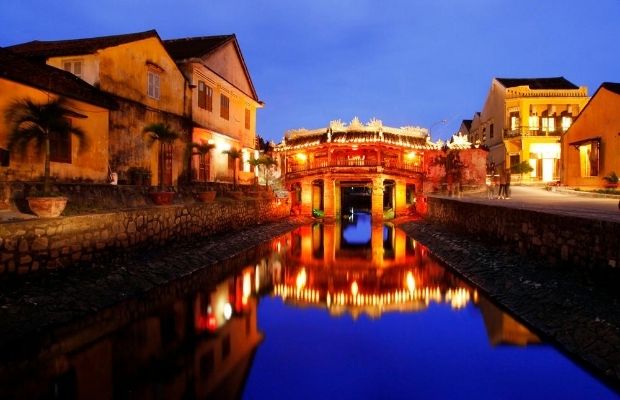
Japanese Bridge, Hoi An
- Fujian Assembly Hall
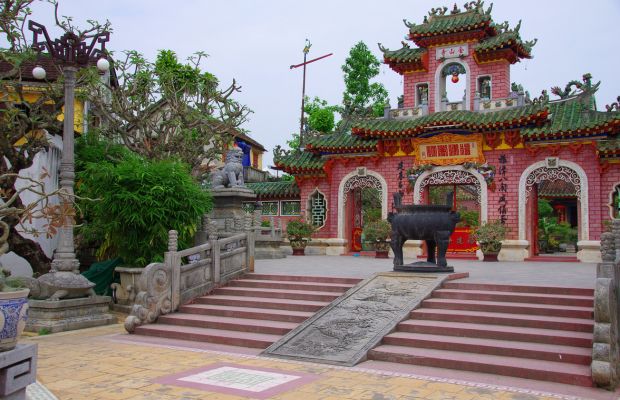
Fujian Assembly Hall, Hoi An
- Hoi An Museum of History and Culture
- Hoi An Museum of Trade Ceramics
- Cua Dai Beach
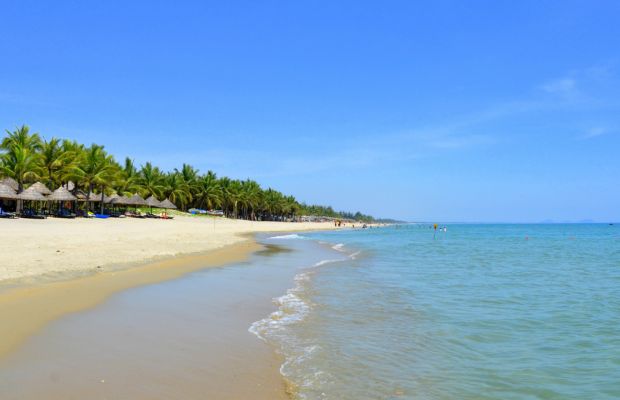
Cua Dai Beach, Hoi An
- An Bang Beach
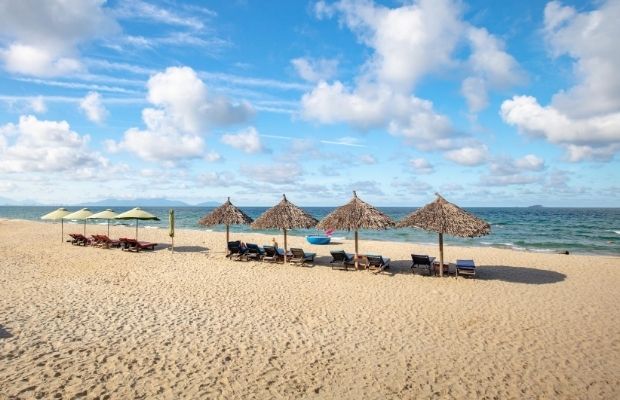
An Bang Beach, Hoi An
- Bay Mau Coconut Mangrove Forest
Don’t miss out on the opportunity to walk around the ancient town and immerse yourself in the tranquil atmosphere here. For more detailed information, please refer to our blog post here: Hoi An Travel Guide.
Trang An Scenic Landscape Complex
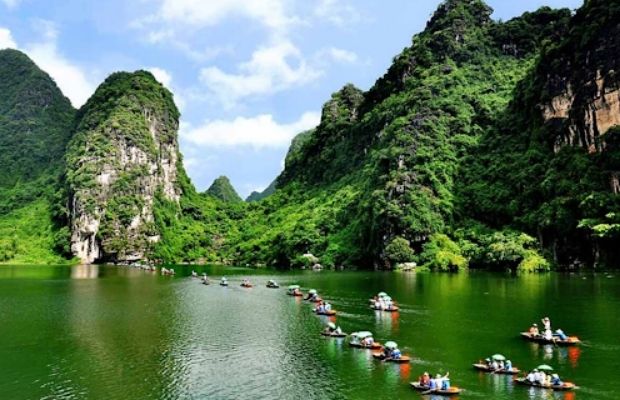
Trang An Scenic Landscape Complex
Among the UNESCO Heritage Sites of Vietnam, Trang An Scenic Landscape Complex is the only mixed heritage site in Vietnam, meeting outstanding criteria, including culture, aesthetic beauty, and geology. On April 23rd, 2014, it was recognized as a world heritage site. The complex includes three adjacent areas: Hoa Lu Ancient Capital Relics, Trang An - Tam Coc - Bich Dong, and Hoa Lu special-used primeval forest.
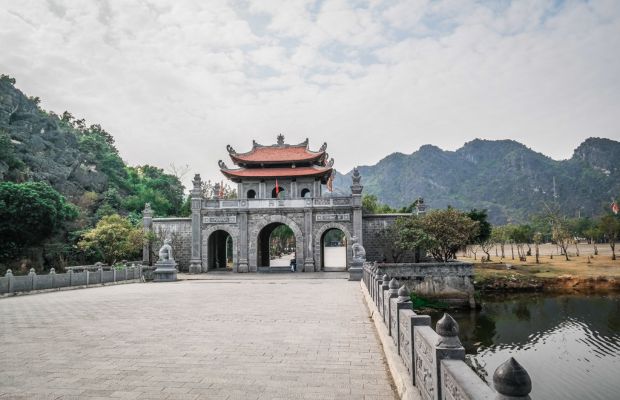
Hoa Lu Ancient Capital Relics
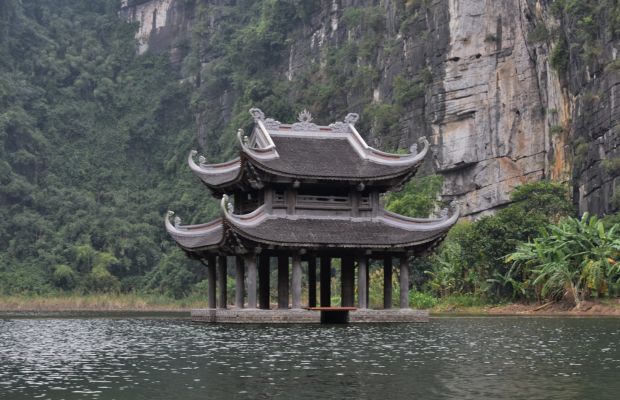
Trang An
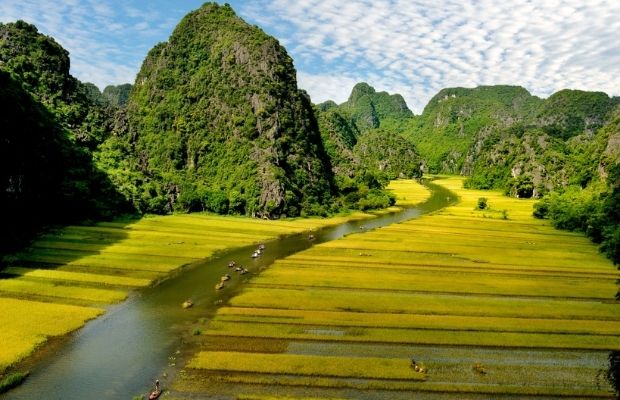
Tam Coc
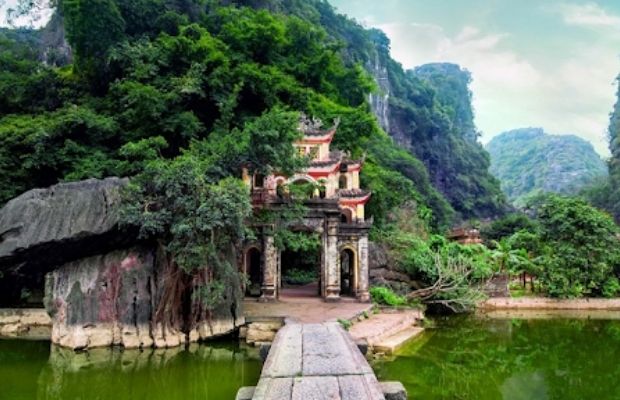
Bich Dong Pagoda
Located near the South of the Red River Delta, Trang An Complex is known as “Halong Bay” on land. It comprises many majestic mountain ranges, incredible limestone grottoes, and wild streams flowing slowly through the cave. Visiting Trang An Scenic Landscape Complex, you will find a gorgeous landscape with stunning stones, a river, a lush jungle, and a blue sky. Thereby, it has become one of the most beautiful grottoes worldwide.
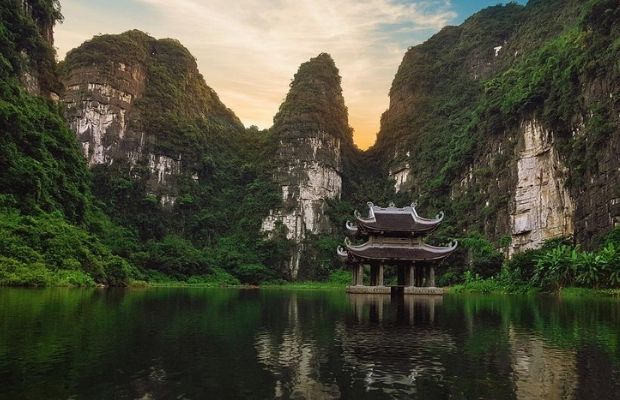
Trang An
If you want to have a complete experience in Trang An Scenic Landscape Complex and Ninh Binh in general, please refer to our tour package here: Tranquil Ninh Binh to Majestic Halong Bay. Joining this tour, besides Ninh Binh, you will have a chance to marvel at the magnificent scenery of Halong Bay, which is also among the UNESCO Heritage Sites of Vietnam. Let’s keep reading for more detailed information.
Halong Bay
Recognized as a World Heritage site by UNESCO in 1994, Halong Bay attracts tourists through its charming landscapes and exciting activities. The bay has a total area of 1,553-meter squares with about 1,969 large and small islands, bounded by Bai Tu Long Bay, Lan Ha Bay, and Cat Ba Island. The core area of Halong Bay covers an area of 434 kilometer squares, including 775 islands.
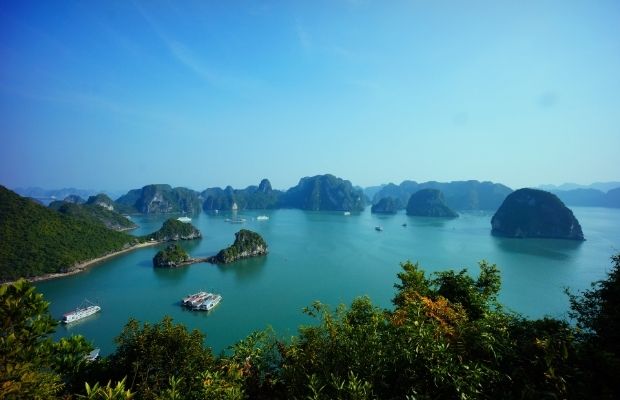
Halong Bay
Thanks to the beautiful landscape, diverse ecosystem, rare genetic resources, and archaeological sites, the bay possesses full of aesthetic, geological, biodiversity, and cultural and historical values. Aesthetic value is one of the noticeable values of Halong Bay. The bay is charming all year round, from spring to winter. No matter which season you come here, you can still find impressive stone islands incredibly diverse in shapes, and patterns, such as Dinh Huong Islet, Fighting Cocks Islet (Trong Mai Islet), etc.
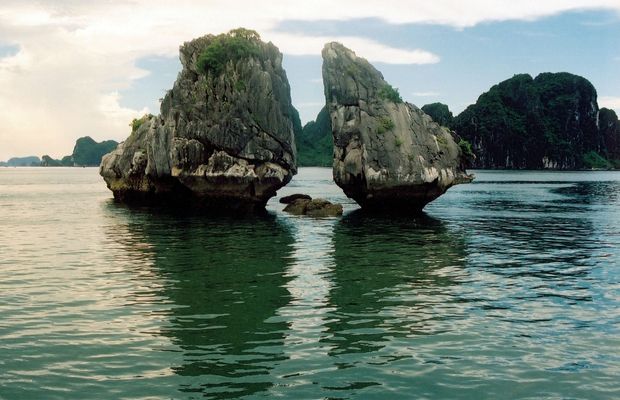
Fighting Cocks Islet
Halong Bay also has attractive caves hidden under the forest canopy. They are Thien Cung cave, Dau Go cave, Sung Sot cave, Trinh Nu cave, Tam Cung cave, etc. Besides karst limestone islands and stunning caves, the aesthetic value of Halong Bay is also in the charming beaches with stretching smooth sandy banks, lying under the islets. For more detailed information about Halong Bay’s values, please refer to our blog post here: The outstanding values of Halong Bay - Handspan Travel Indochina.
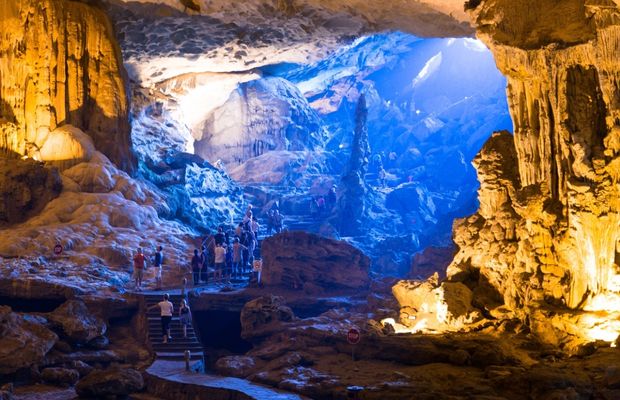
Dau Go Cave
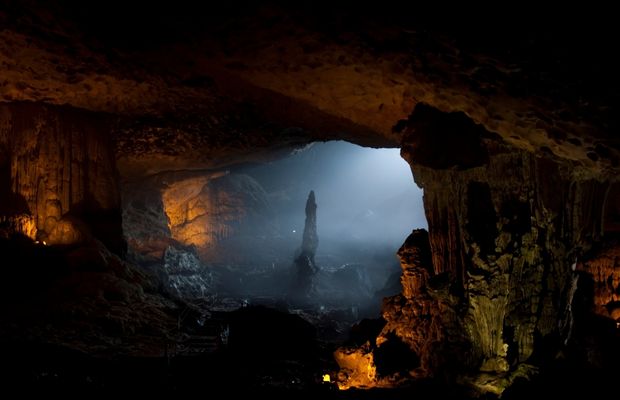
Sung Sot Cave
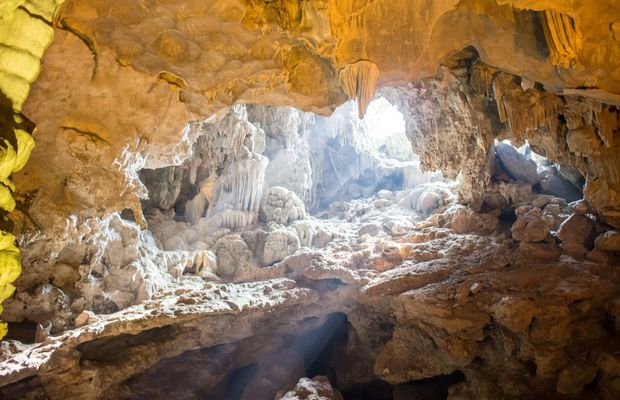
Thien Cung Cave
The Complex of Hue Monuments
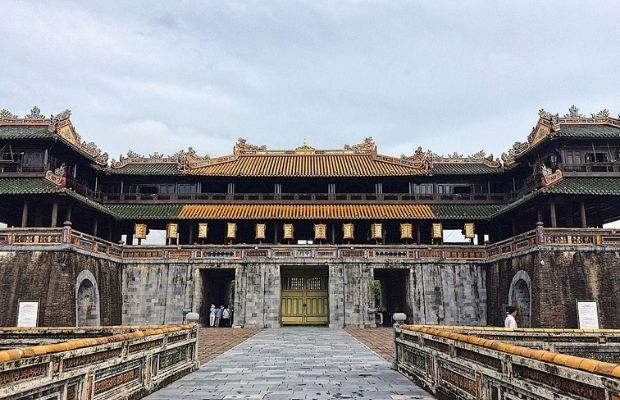
Hue Imperial Citadel
Located along the Huong River banks, the Complex of Hue Monuments used to be the capital of Vietnam from 1802 to 1945. On December 11th, 1993, it was recognized as one of the UNESCO Heritage Sites in Vietnam with outstanding global values. The architectural complex of Hue Ancient Capital includes a system of relics related to the Nguyen Dynasty, distributed in Hue City and Huong Tra, Phu Vang, and Phu Loc, Thua Thien Hue Province. The architecture of the site is a unique combination of traditional Vietnamese architecture, Eastern philosophical ideas, and features influenced by Western military architecture. This architecture is also in harmony with the natural elements of the Ngu Binh mountain, Perfume River, Gia Vien dune, Boc Thanh dune, Hen dune, etc.
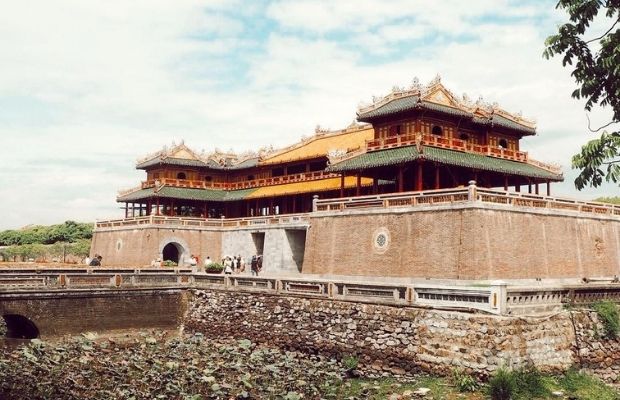
Hue Imperial Citadel
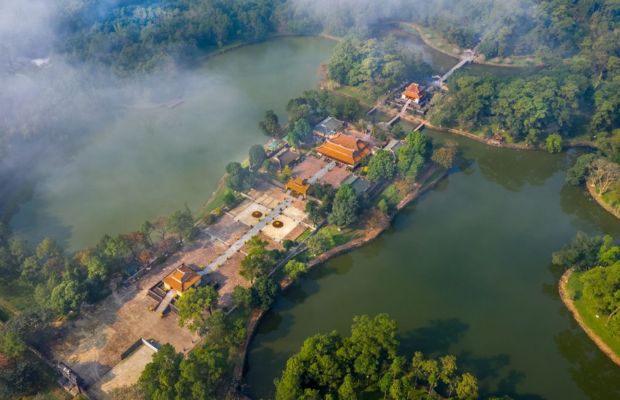
Minh Mang Tomb
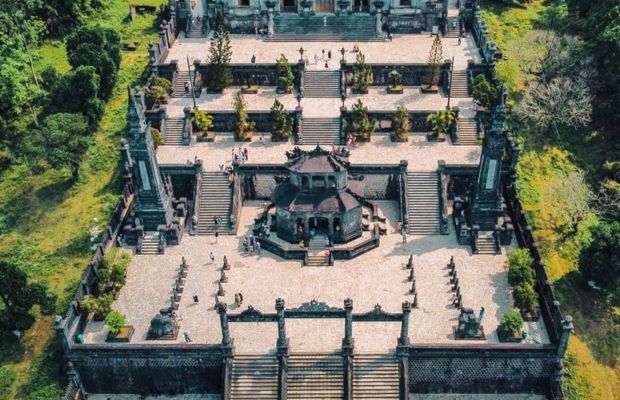
Khai Dinh Tomb
Through time and historical changes, Hue still preserves the appearance of an ancient capital, with hundreds of beautiful artworks having special value imbued with the local identity. The Imperial Citadel of Hue, the systems of tombs of the Hue kings, An Dinh Palace, Tran Binh Dai, Tran Hai Thanh, and Hon Chen Palace, are some typical relics of the Complex of Hue Monuments.
For further things to know before traveling to Hue, please refer here: Hue travel guide.
Citadel of the Ho Dynasty
- Address: Vinh Tien, Vinh Loc, Thanh Hoa Province, Vietnam
The Citadel of the Ho Dynasty was recognized as one of the UNESCO Heritage Sites of Vietnam on June 26, 2011 thanks to its historical and cultural values and unique architecture. It was built in 1937 by Ho Quy Ly, under the reign of King Tran Thuan Tong. Since then, it became the capital of Vietnam until 1407. Currently, it is among the rare remaining stone citadels in Southeast Asia.
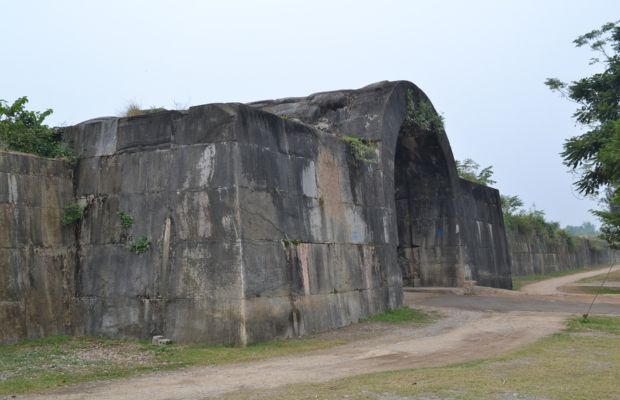
The Citadel of the Ho Dynasty
Possessing an ancient beauty, the Citadel of the Ho Dynasty attracts both domestic and international tourists. Let’s find out some pieces of information about this spot.
- The Citadel of the Ho Dynasty’s front gate
The gate in the South is the citadel's main gate. The gate includes three doors with a height of 5.45 meters on two side gates and 5.75 meters in the middle gate. The wall at the front gate is 5-10m high depending on the location.
- The tranquil scenery inside the Citadel of the Ho Dynasty
Stepping foot inside the Citadel of the Ho Dynasty, you will see a vast grassland imbued with Vietnamese countryside. The citadel is full of vitality with corn fields, lotus ponds full of flowers, and children playing on the grass.
- Inner Citadel (Thanh Noi)
The inner citadel has a rectangular shape, 870.5m long in the North-South direction and 883.5m in the East-West direction. The gates of the inner citadel were built in the style of rolling arches, and stacked stone. After 600 years, the stone slabs are still kept intact with an ancient beauty.
- Hao Thanh
Hao Thanh is about 90 meters wide, with a bottom of 52 meters wide and more than 6.5 meters deep. The crushed stone and macadam are used to maintain the stability of the Citadel.
- La Thanh
In front of Hao Thanh is La Thanh, which is a 6-meter high earth citadel, and 9.2 meter-wide surface. The entire La Citadel was built based on the natural terrain, creating a majestic natural wall, with the function of protecting the citadel and preventing floods.
Let’s visit the Citadel of the Ho Dynasty and immerse yourself in the antique charm here!
My Son Sanctuary
- Address: Duy Phu Commune, Duy Xuyen District, Quang Nam Province, Vietnam
My Son Sanctuary is a sacred site for the enthralling Champa civilization and one of the most significant archaeological treasures in Southeast Asia. It was recognized as one of the UNESCO Heritage Sites of Vietnam on December 1st, 1999. The sanctuary is an outstanding example of cultural exchange with indigenous cultural integration, vividly reflecting the development process of Champa cultural history in Southeast Asian cultural history.
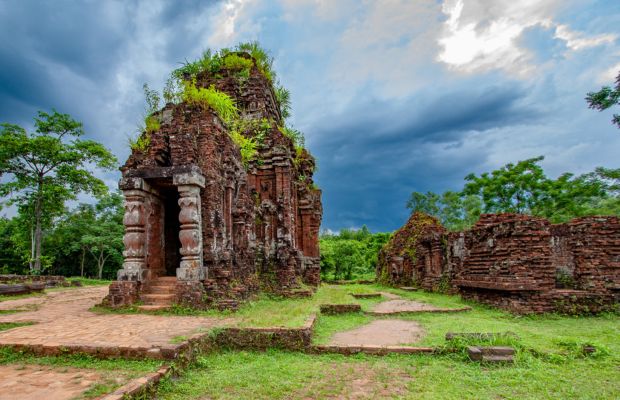
My Son Sanctuary
The architecture of My Son Sanctuary is greatly influenced by Hinduism. All temples and towers are made of brick and stone and face east. This is the direction of the rising sun and is considered the place where the gods reside. The temple structure here has 3 main parts: the tower base, the tower body, and the tower top. Visiting the My Son Sanctuary, you will have a chance to explore the centuries-old architecture. Besides, don’t miss out on the opportunity to enjoy the Kate festival of the Cham people, and admire the unique ancient road up to 8 meters wide.
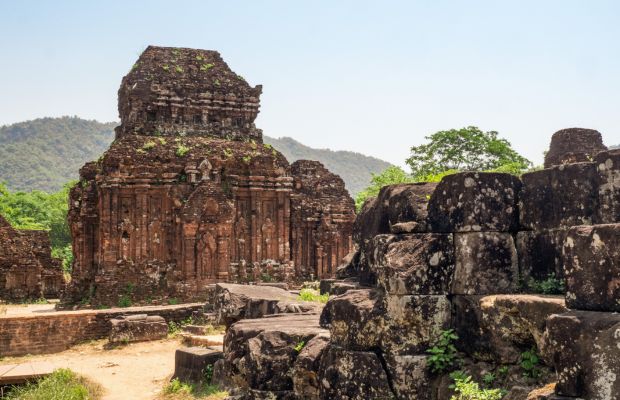
My Son Sanctuary
For a complete experience, please refer to our tour package here: My Son Sanctuary.
Phong Nha - Ke Bang National Park
- Address: Bo Trach & Minh Hoa District, Quang Binh Province, Vietnam
Phong Nha - Ke Bang National Park is also among the UNESCO Heritage Sites of Vietnam appealing to tourists. This place is not only famous for its spectacular cave systems but also for its rich biodiversity, and stunning landscapes.
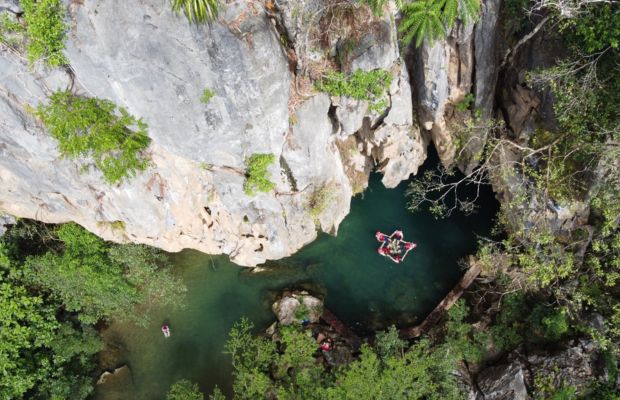
Phong Nha - Ke Bang National Park
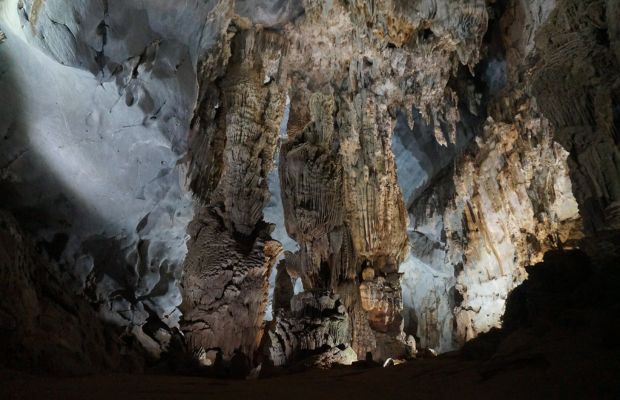
Phong Nha Cave
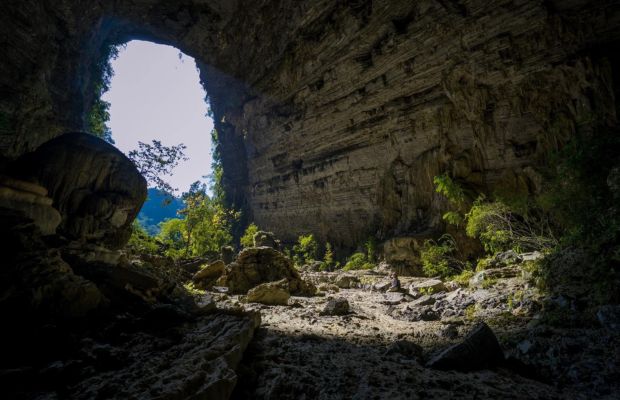
Tu Lan Cave
The park has expansive limestone karsts, hidden valleys, dense forests, and a complex system of rivers and streams due to the karst features. The limestone karsts here have been shaped by millions of years of geological processes, resulting in their unique and awe-inspiring formations. The mesmerizing rivers also enhance the park’s natural splendor. Chay River, Son River, and Trooc River are some notable rivers that originate from the surrounding karst mountains and underground systems.
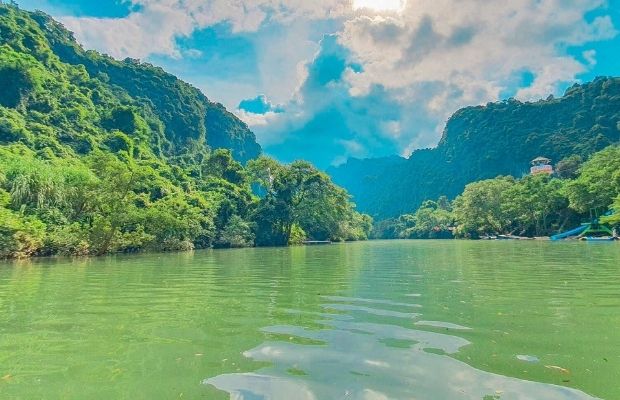
Chay River in Phong Nha
The park is also home to diverse ecosystems, including dense forests that blanket the landscape. These forests harbor nearly 3000 plant species, contributing to the park's remarkable biodiversity. Among them, there are 112 species in the Vietnamese Red Book, and 121 species are in the IUCN Red Book. The forests are also the habitat for nearly 1400 species, including langurs, macaques, bears, deer, civets, and a diverse range of bird species. The park also harbors many reptiles, amphibians, and insects.
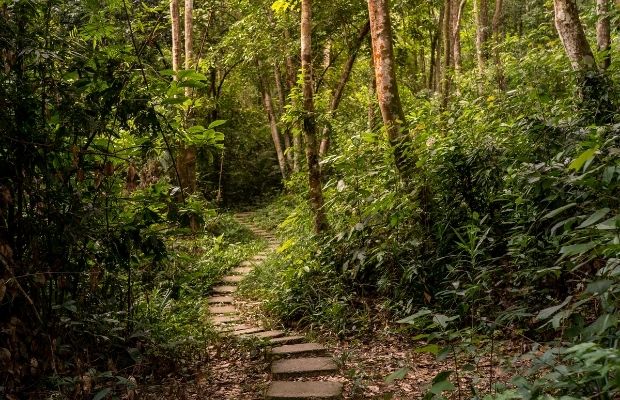
Phong Nha - Ke Bang National Park
For further information about Phong Nha - Ke Bang National Park, please do not hesitate to contact our team. Besides, you can refer to our tour packages here for a complete experience.
Phong Nha into the Wild: Jungle and Camping
Phong Nha Jungle Trek and Cave Discovery
In conclusion, you have just known about the 08 UNESCO Heritage Sites of Vietnam. Let’s prepare your luggage, be ready for a trip to Vietnam and explore those sites.
__logo.png)
__hanoi-water-puppets.jpg)
__angkor-wat-blue-reflections.jpg)
__vientiane-buddha-park-monks.jpg)
__bagan-dhammayazika-dusk.jpg)
